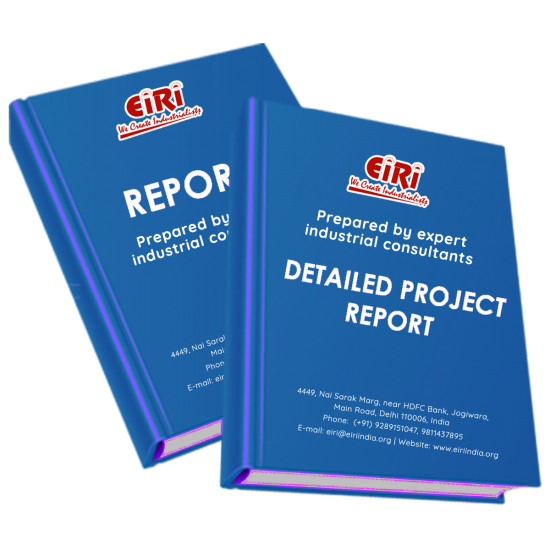The project report includes Present Market Position and Expected Future Demand, Market Size, Statistics, Trends, SWOT Analysis and Forecasts. Report provides a comprehensive analysis from industry covering detailed reporting and evaluates the position of the industry by providing insights to the SWOT analysis of the industry.
India is the largest producer of banana in the world and about 90% of banana produced is consumed domestically as fresh fruit. Merely 5% is consumed in processed form providing a good potential for future processing. About 2.5% is only processed purely as banana products and the rest as an ingredient in other foods.
About 17 varieties of products could be made from banana. The primary product of banana in market is “fried chips and candy” which constitute around 31%, rest as banana puree 9%, banana pulp 3%, banana beer 3%, banana wafers 3%, banana powder 6% and others.
Being a highly perishable in nature, value addition of banana into figs, flour, powder, banana chips, synthetic and natural flavouring to energy drinks could help cater the changing tastes and rising demand for value added ready-to-eat products. With different levels of processing (viz. primary, secondary, tertiary levels) including drying procedure or frying procedure, the nutritional value of banana can help serve multiple nutritional needs.
India is the largest producer of banana in the world accounting for 37.2 per cent of world’s banana production with an annual production of about 248.69 lacs MT/ year and the crop occupying about 7.21 lacs hectares of agricultural area. It accounts for 32 per cent of the total fruit production.
Banana is considered to be one of the most popular and widely consumed fruits in India due to the nutritional value it offers at a relatively lower price.
The fruit is a rich source of carbohydrates and vitamin B; it is also easy to digest containing no fat or cholesterol. However, under normal conditions, banana has a shelf life of 6-7 days which makes it a highly perishable fruit crop.
Moreover, the losses are estimated to be almost one-fourth of the total production and the key reasons for these losses have been cited as faulty handling procedures like improper transportation, lack of packaging, cold chain and post-harvest storage infrastructural facilities.
Important banana varieties cultivated in different states of India are given below:
State Varieties grown
Andhra Pradesh Dwarf Cavendish, Robusta, Rasthali, Amritpant, Thellachakrakeli, Karpoora Poovan, Chakrakeli, Monthan and Yenagu Bontha
Assam Jahaji (Dwarf Cavendish), Chini Champa, Malbhog, Borjahaji (Robusta), Honda, Manjahaji, Chinia (Manohar), Kanchkol, Bhimkol, Jatikol, Digjowa, Kulpait, Bharat Moni
Bihar Dwarf Cavendish, Alpon, Chinia, Chini Champa, Malbhig, Muthia, Kothia , Gauria
Gujarat Dwarf Cavendish, Lacatan, Harichal (Lokhandi), Gandevi Selection, Basrai, Robusta, G-9, Harichal, Shrimati
Jharkhand Basrai, Singapuri
Karnataka Dwarf Cavendish, Robusta, Rasthali, Poovan, Monthan, Elakkibale
Kerala Nendran (Plantain), Palayankodan (Poovan), Rasthali, Monthan, Red Banana, Robusta
Madhya Pradesh Basrai
Maharashtra Dwarf Cavendish, Basrai, Robusta, Lal Velchi, Safed Velchi, Rajeli Nendran, Grand Naine, Shreemanti, Red Banana
Orissa Dwarf Cavendish, Robusta, Champa, Patkapura (Rasthali)
Tamil Nadu Virupakshi, Robusta, Rad Banana, Poovan, Rasthali, Nendran, Monthan, Karpuravalli, Sakkai, Peyan, Matti
West Bengal Champa, Mortman, Dwarf Cavendish, Giant Governor, Kanthali, Singapuri
Value Addition in Banana
Presently, India is witnessing a transition in food consumption habits as the per capita income rises. Consumers are becoming increasingly aware of the nutritional benefits being offered by the food products they purchase and the demand for non- grain food crops, fruits and animal products (dairy and poultry) is expanding12. Value added products like puree, jams, health drinks, milk shakes and juices all of which use fruits as a base can satisfy this change in the consumption preference
Banana is a readily available fruit and comes at a price sensitive to the lower income consumer’s daily energy needs. Processing the banana fruit to harness it nutritive value, needs to remain keenly sensitive to the price concerns it will place domestically on this energy source. Banana has a shelf life of 6-7 days which makes it a highly perishable fruit crop. NRCB through a recent research estimated the losses at around 20-24% which amounts to 3 to 4 million tonnes (valued at Rs. 3000 crores per annum).
Being rich in iron, with required dietary fiber, potassium, vitamin’s B6 and C, banana processed outputs will be in demand by urban consumers needing high sources of energy in ready to eat foods. Of the different levels of processing, the ones for powder and chips (identified in the report below) seek to conserve the nutritional value of banana and serve multiple consumer’s nutritional needs (for bakery, energy, nutrition, confectionary items) and keep a look out for related income / spending sensitivities.
In terms of nutrition, Banana as fresh fruit comes at a relatively lower price, and often serves as the poor man’s ready energy source. This fruit is rich in iron, with low saturated fat levels, low sodium content and it provides much needed dietary fiber, potassium, including vitamin B6, and vitamin C.
It is intended to prepare a Feasibility Report to install a Banana Powder production capacity of 72000 Kg/Year as a Green Field Project.



